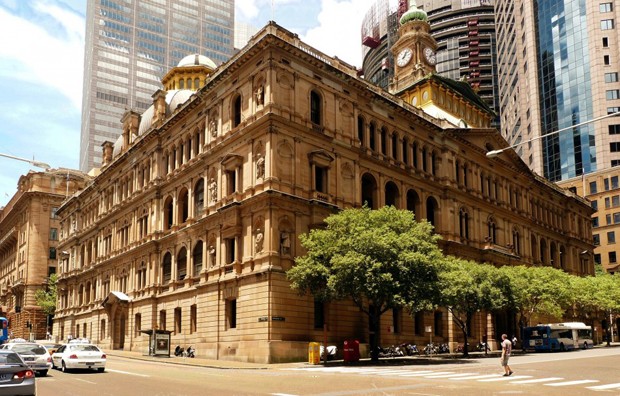Two of Sydney’s most historic buildings, the Department of Lands building and the Department of Education building, are set to hit the commercial market as part of the New South Wales government’s second tranche of asset sales.
Together with two other properties – the Ausgrid Building on George Street and a vacant plot of land at Macquarie Park – the sales are expected to generate a total of approximately $200 million for the NSW government.
The Education Building occupies an entire city block, and features four detailed sandstone walls designed to dominate the precinct. The site is the longest official seat of the head office of the NSW government education administration, having been occupied since 1881.
The Department of Lands building, at the heart of Sydney’s CBD, is another sandstone-clad building which could reap as much as $80 million. Bounded by Bridge, Gresham and Bent streets, it was designed by colonial architect James Barnet and completed in the late 19th century.
The three-storey structure was developed in the Italian Renaissance Revival style and was once Sydney’s largest buuilding. However, its present tenant, the Department of Planning and Infrastructure, says that the building’s floor space is too big for their needs.
"The divestment of these assets reinforces the New South Wales Government's commitment to only owning strategic assets that support core government service provisions," says Acting Minister for Finance and Services Andrew Constance.

The Department of Lands building. Image courtesy of International Business Times.
The announcements have already met with dissent from the industry, with the Australian Institute of Architects expressing concern at the sale of two iconic, heritage-listed landmarks.
NSW Chapter President Joe Agius says the buildings’ historical significance and importance to the urban fabric of Sydney make them “priceless”, and that all efforts should be made to ensure public access is retained for both buildings.
“The Department of Lands building is…one of the grand public buildings that help define Sydney as a ‘sandstone’ city, while the Department of Education building is one of the city’s most outstanding examples of Edwardian architecture,” he says.
“Should the government insist on selling the buildings, the Institute strongly recommends it investigate a private sector leasing scheme that enables public access and contributes some public benefits.”
Agius also notes that given the heritage significance of the buildings, both of which are listed on the State Heritage Register and the City of Sydney local environmental plan, any proposed use must conform to the conservation management plans for the buildings.
This precludes any development external to the heritage fabric.
“In assessing any tenders for the sale of the buildings, the government should look beyond immediate economic return and consider inter-generational issues. Assessment criteria should consider ongoing public amenity, the city’s cultural development and public access to the buildings,” says Agius.
However, Constance has said that once sold, the buildings will not be leased back by the government.
The NSW government has already generated $405m from the sale of the first tranche of assets earlier this year, which includes the McKell building in Sydney's Chinatown to Queensland fund manager Cromwell Group. The $405m sale price was $105m above initial estimates and will be ploughed into housing infrastructure in Sydney's west.
Macquarie Capital, the investment banking arm of Macquarie Group Ltd. (MQG), is advising the government on this second batch of sales.

